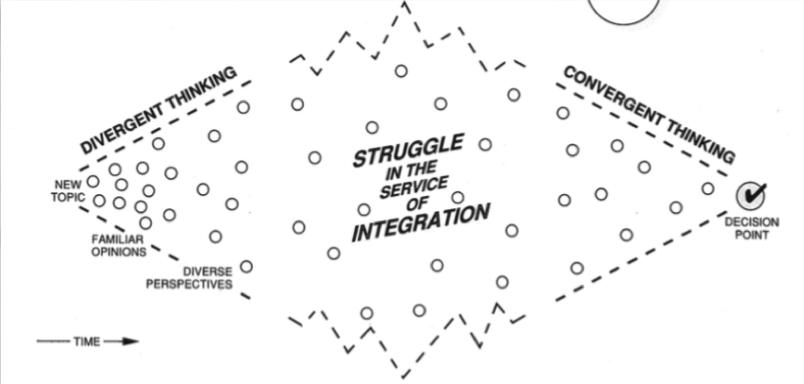A lot of people come to me to ask about what happens in a Design Thinking course. Although it is a theme that is getting very common in our lives, it still is hard to evaluate the real value of learning a new mindset and how design can be a powerful path to generate human-centered and innovative solutions.
To start to answer such questions, I’ve decided to share my experience below as a participant during the second week of the Design Thinking Specialisation course.
Week 2 started with an activity in which we all engaged in a Debate under these rules: the defendant’s and contestant’s role were pre-determined and could be changed right in the middle of the argumentation, irrespective of the participants’ will. So, a person defending a particular point of view had to, within seconds, find the arguments to criticize that very same idea.
It was clearly very challenging and also a lot of fun! The most important part of the activity, though, was the debriefing afterward, when deep insights were generated. It was clear to everyone how difficult it was to shift perspectives over the same issue and how quickly we tend to hold on to our ideas and beliefs. It was also very difficult to defend an idea that was against one’s own initial beliefs and convictions. And yet, that’s precisely the challenge we face in the design process: to have the ability to build a new understanding of issues we may have developed a crystallized and rigid opinion about.
Another important insight was the understanding of the differences between a dialogue and a debate and the complexity involved in both interactions. The minds of the people involved in the process of exchanging ideas can take unexpected turns, and choices are made very fast. The outcome is almost inevitably unknown to those who embark on this “journey”.
Nevertheless, this complexity is actually the very nature of our reality. It was Edward Lorenz, a meteorologist who, in the 60’s, by studying weather patterns, understood for the first time the complex nature of phenomena and developed the Chaos Theory, bringing a very different understanding of the reality we live in, from the Cartesian model of thinking we are so used to.
This new understanding asks for the development of our ability to think systemically, i.e., to look at human development from the perspective of its complexity. This frame of mind, or approach, encompasses not only the individual person, but it also takes into consideration the context and the relationships established within the system.
Design Thinking is such an approach. It offers a frame through which we can navigate the chaos and gives us the lenses to help us see meaningful connections amidst complexity.
In fact, chaos is the prelude to creativity. That’s why one of the most important challenges during the Design Thinking process is to handle group discussions and group decisions through the divergent and the convergent phases of the process.
It is very important that all the group members have individual and divergent ideas and that they build on each other’s contributions. In order to help us with that, the groups were asked to appoint a timekeeper, a secretary to register all the ideas and an internal facilitator (leader) whenever we gathered to work on a given challenge.
After all the conceptual input and guidelines, we were ready for our second challenge of the course – How might we improve the shopping experience in the markets of the neighborhood? Our first step was to dig deep into the understanding of the challenge. We used some tools to help us with that. The first one was about collecting ideas and information based on what the members of the group already knew about the theme and what we thought we needed to explore more.
The second tool was about breaking the challenge question into “chunks” – (1) improve | (2) shopping experience | (3) neighborhood markets – and then expand into meanings and connections that came to our minds related to each chunk. This exercise widened a lot our perspective of what the challenge might encompass and prepared us for the next phase: the three-part research process: (1) Listening to the people; (2) Observing what they do when they shop; (3) Empathizing with their feelings, while in a shopping experience.
After preparing the guidelines for the conversation we would have with shoppers in the markets of the neighborhood, all the members of the five groups set off into the streets to start our investigative process.
On the second day of the challenge, we built an Empathy Map and created a persona, based on a combination of all the people we had talked to on the streets.
Then, from the analysis of all the data and perceptions gathered, we could come up with the insights that helped us build the new point of view of the challenge (POV), which would guide us into the ideation and prototyping phases. At the end of the third day, the five groups had presented some amazing ideas, which, with a little more time and work, could be really implemented!


